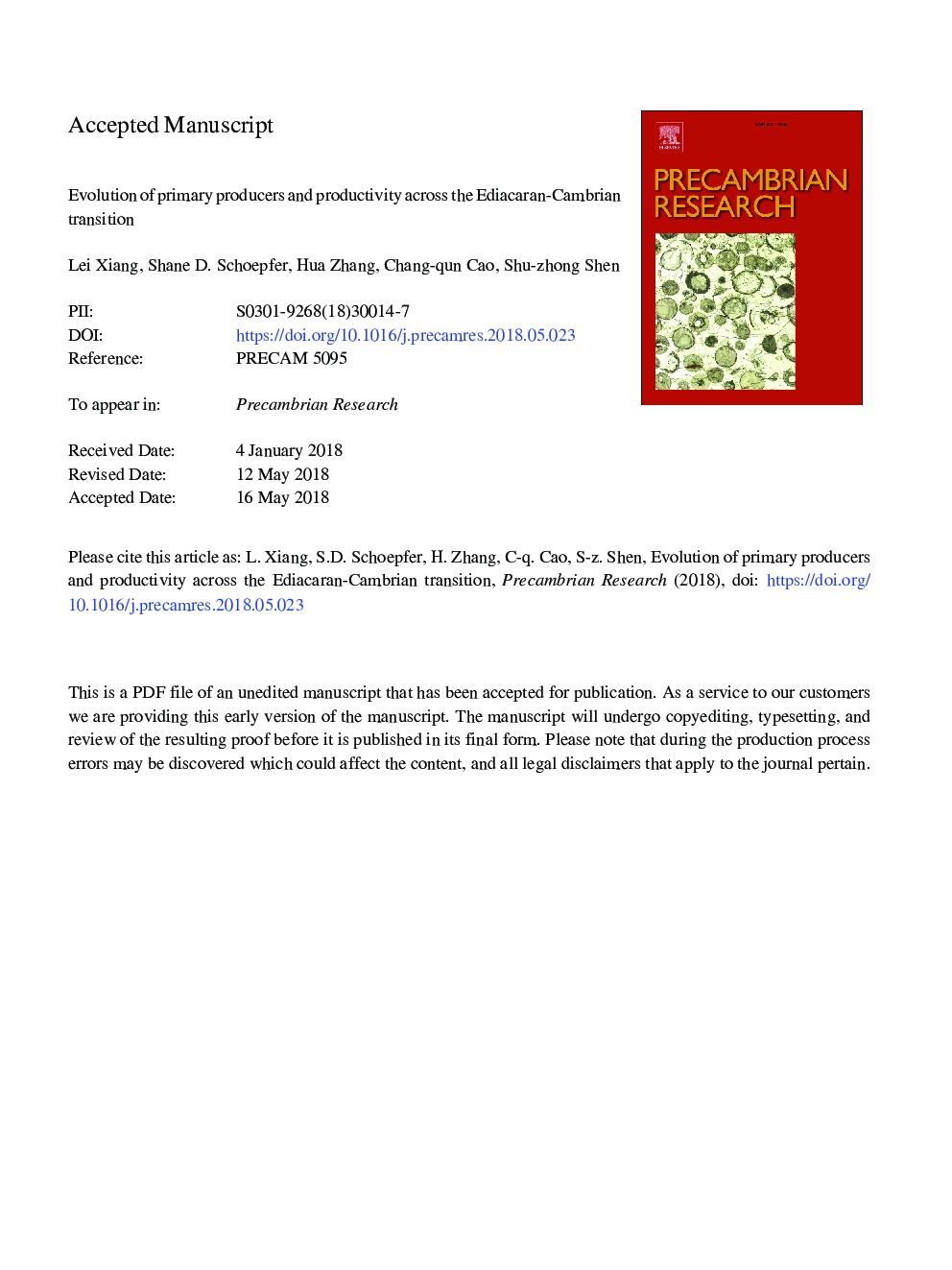| کد مقاله | کد نشریه | سال انتشار | مقاله انگلیسی | نسخه تمام متن |
|---|---|---|---|---|
| 8912525 | 1639562 | 2018 | 41 صفحه PDF | دانلود رایگان |
عنوان انگلیسی مقاله ISI
Evolution of primary producers and productivity across the Ediacaran-Cambrian transition
دانلود مقاله + سفارش ترجمه
دانلود مقاله ISI انگلیسی
رایگان برای ایرانیان
کلمات کلیدی
موضوعات مرتبط
مهندسی و علوم پایه
علوم زمین و سیارات
ژئوشیمی و پترولوژی
پیش نمایش صفحه اول مقاله

چکیده انگلیسی
Nearly all extant animal phyla first appeared during the Ediacaran-Cambrian transition. A revolution in primary producer ecology and marine productivity has been proposed as a bottom-up ecological driver for this rapid diversification of metazoans. However, the control(s) driving the evolution of primary producers and primary productivity around the Ediacaran-Cambrian transition, and their potential relationship to the Cambrian Explosion, are not fully understood. In this study, we measured the nitrogen content and the nitrogen isotopic composition of kerogen in the Piyuancun and Hetang Formations, using samples collected from the Chunye-1 well, on the Lower Yangtze Block in western Zhejiang. Our isotope results suggest that nitrate was the dominant N source fueling primary productivity during deposition of the entire Piyuancun Formation and lower Hetang Formation, with only a minor contribution from N2 fixation. Quantitative reconstructions of paleoproductivity based on organic carbon and pyrite content and sedimentation rate indicate that productivity either stayed the same or increased during the transition from the Piyuancun Formation to the overlying Hetang Formation. Thus, fixed N availability was not the ultimate factor limiting primary productivity during the Ediacaran-Cambrian transition. Combining our data with published nitrogen isotope records from the Early-Middle Ediacaran to Cambrian Stage 4 suggests that NO3â was the dominant N species fueling phytoplanktonic productivity during the broad Cambrian Explosion interval, from its earliest roots in the Ediacaran through the main episode in Cambrian Stage 3. Eukaryotes lack the ability to fix nitrogen, and preferentially assimilate nitrate. The NO3â-dominated euphotic zone from the Early-Middle Ediacaran to Cambrian Stage 3 may have promoted the radiation of relatively large eukaryote phytoplankton, which may have been an important driver of early animal diversification.
ناشر
Database: Elsevier - ScienceDirect (ساینس دایرکت)
Journal: Precambrian Research - Volume 313, August 2018, Pages 68-77
Journal: Precambrian Research - Volume 313, August 2018, Pages 68-77
نویسندگان
Lei Xiang, Shane D. Schoepfer, Hua Zhang, Chang-qun Cao, Shu-zhong Shen,